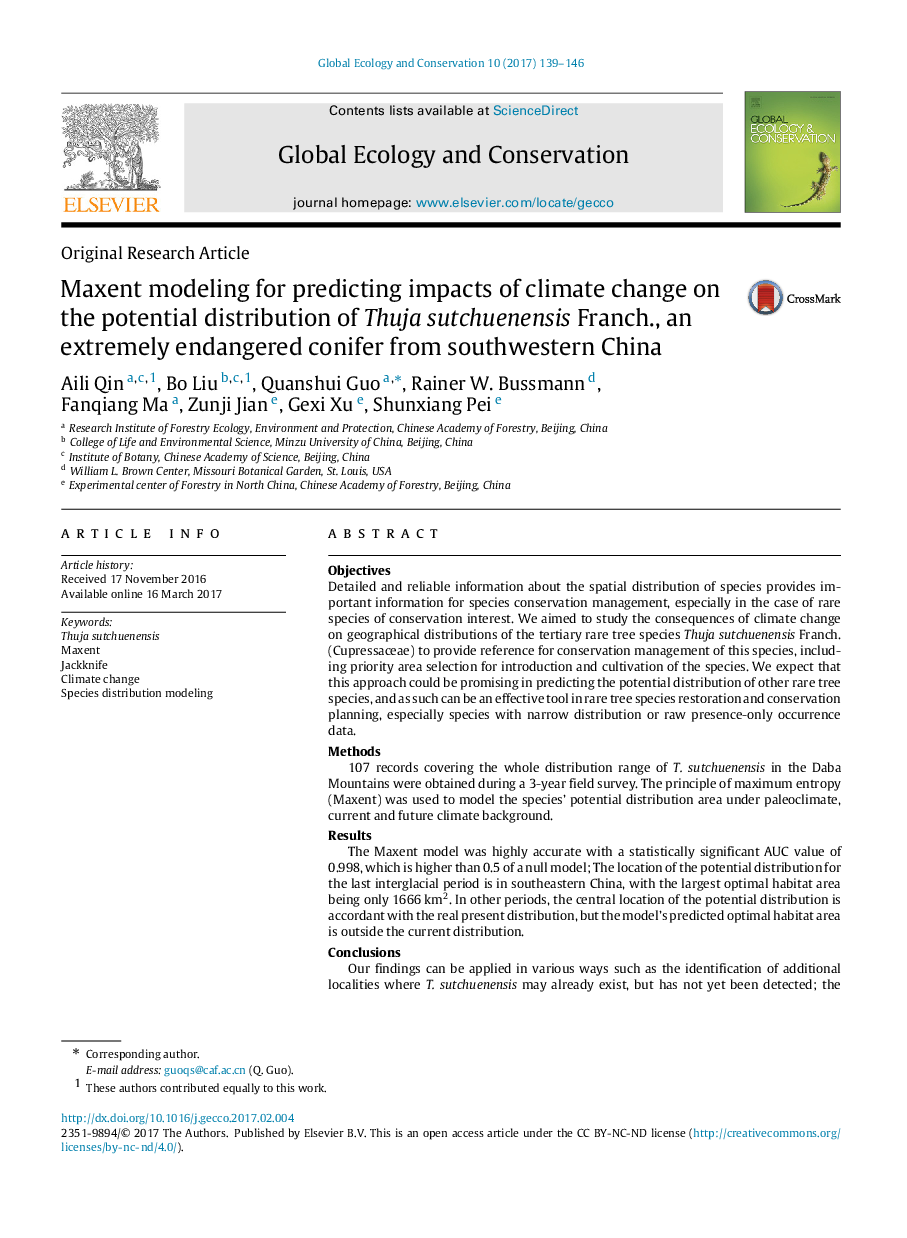| کد مقاله | کد نشریه | سال انتشار | مقاله انگلیسی | نسخه تمام متن |
|---|---|---|---|---|
| 5742380 | 1617657 | 2017 | 8 صفحه PDF | دانلود رایگان |

ObjectivesDetailed and reliable information about the spatial distribution of species provides important information for species conservation management, especially in the case of rare species of conservation interest. We aimed to study the consequences of climate change on geographical distributions of the tertiary rare tree species Thuja sutchuenensis Franch. (Cupressaceae) to provide reference for conservation management of this species, including priority area selection for introduction and cultivation of the species. We expect that this approach could be promising in predicting the potential distribution of other rare tree species, and as such can be an effective tool in rare tree species restoration and conservation planning, especially species with narrow distribution or raw presence-only occurrence data.Methods107 records covering the whole distribution range of T. sutchuenensis in the Daba Mountains were obtained during a 3-year field survey. The principle of maximum entropy (Maxent) was used to model the species' potential distribution area under paleoclimate, current and future climate background.ResultsThe Maxent model was highly accurate with a statistically significant AUC value of 0.998, which is higher than 0.5 of a null model; The location of the potential distribution for the last interglacial period is in southeastern China, with the largest optimal habitat area being only 1666Â km2. In other periods, the central location of the potential distribution is accordant with the real present distribution, but the model's predicted optimal habitat area is outside the current distribution.ConclusionsOur findings can be applied in various ways such as the identification of additional localities where T. sutchuenensis may already exist, but has not yet been detected; the recognition of localities where it is likely to spread to; the priority selection area for introduction and cultivation and the conservation management of such rare tree species.
Journal: Global Ecology and Conservation - Volume 10, April 2017, Pages 139-146